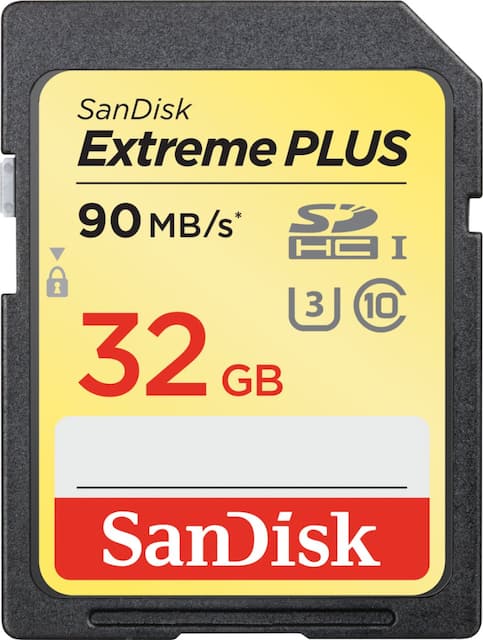SanDisk – Extreme PLUS 32GB SDHC UHS-I Memory Card – SDSDXWF-032G-ANCIN
The SanDisk Extreme PLUS SDHC UHS-I Memory Card delivers performance that lets you take control of your creativity. With shot speeds of up to 60MB/s and UHS speed Class 3 (U3) recording, you’re ready to capture stunning high-resolution, stutter-free 4K UHD video.
The SanDisk Extreme PLUS SDHC UHS-I Memory Card delivers performance that lets you take control of your creativity. With shot speeds of up to 60MB/s and UHS speed Class 3 (U3) recording, you’re ready to capture stunning high-resolution, stutter-free 4K UHD video. The memory card also delivers up to 90MB/s transfer speeds so you can quickly move your photos where you want them. Built to withstand weather, water, shocks and other less-than-ideal conditions so you can rest assured that it’s good to go wherever you go.
Additional information
| Storage Capacity | 32 gigabytes |
|---|---|
| Maximum Read Speed | 90 megabytes per second |
| Maximum Write Speed | 60 megabytes per second |
| Memory Card Format | Secure Digital High Capacity (SDHC) |
| Speed Class Rating | 10 |






by Norman
Works as intended. I used it for game camera and haven’t had any issues.
by Favre
Got it on sale, works great for sharp clear fast exposures of race cars!
by Vette
Pictures come out perfect, always liked the Sandisk first time I used the extreme plus would buy again.
by Don
Works as advertised. Reasonable price as well. Would buy again.
by Terry
Great for capturing high definition video and photography
by Valeria
Seems to be a reliable disk and easy to use. I had no failure in editing pictures.
by Helen
I like the quantity and the sped of this memory card.
by Linda
Absolutely love them. They work well for my needs and are budget friendly.